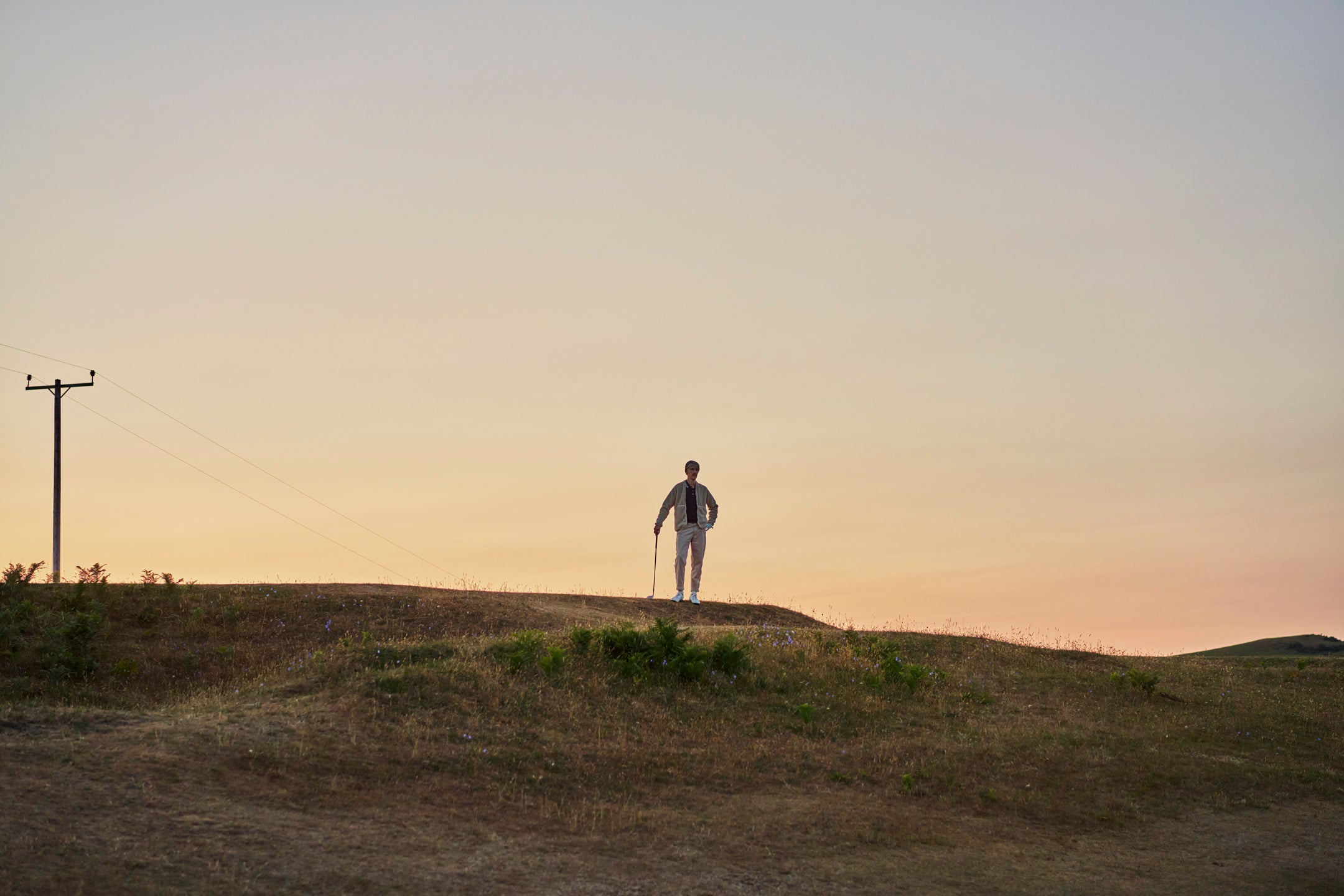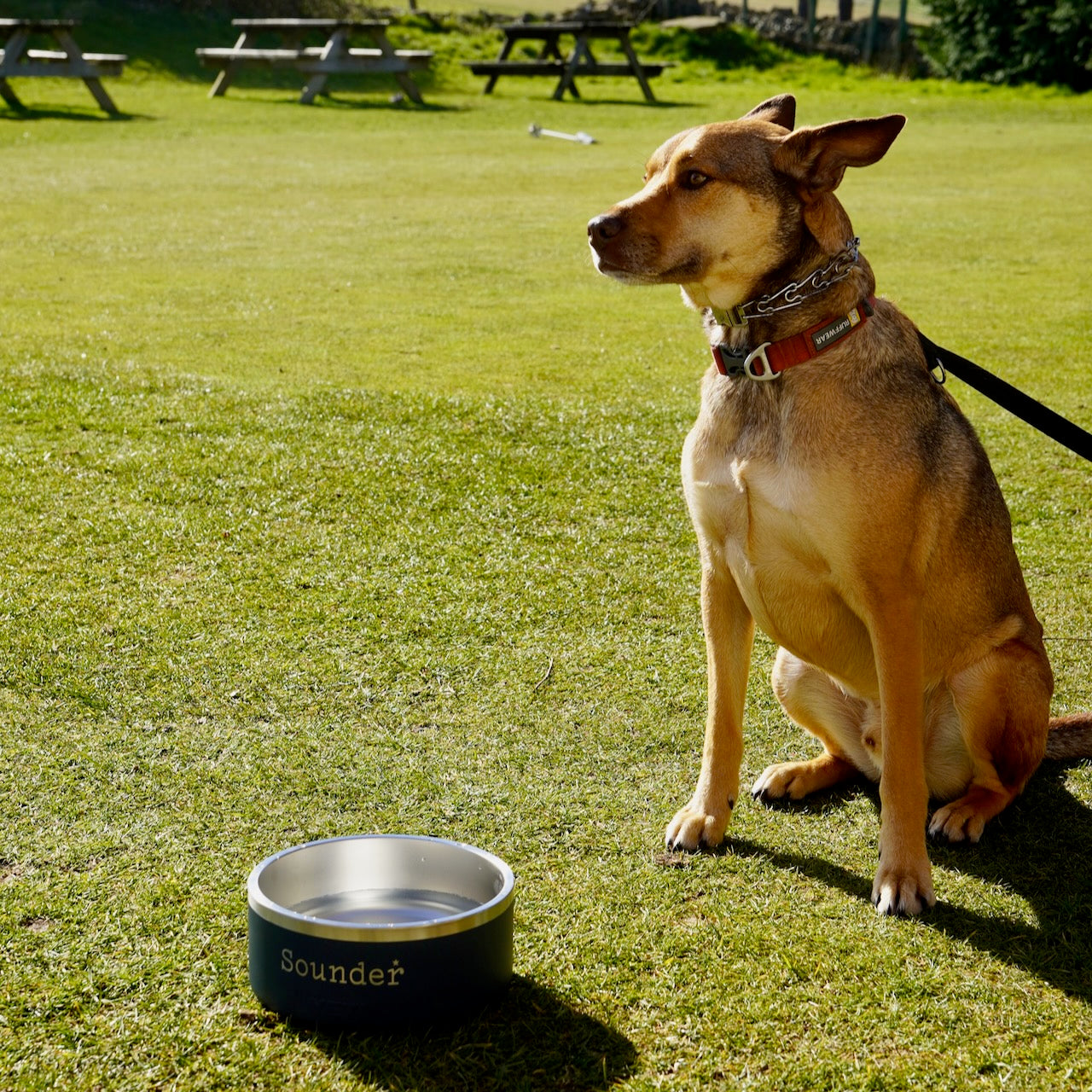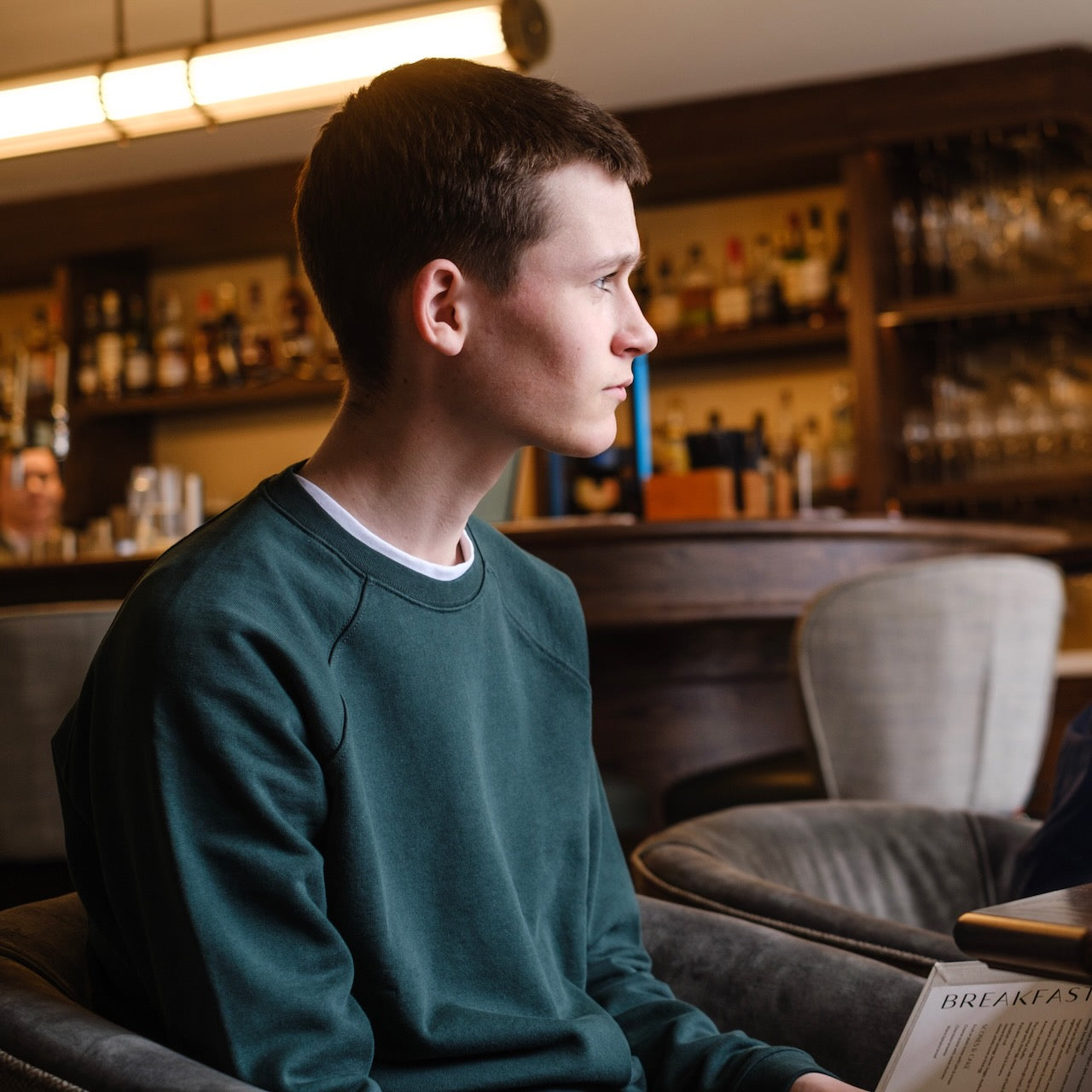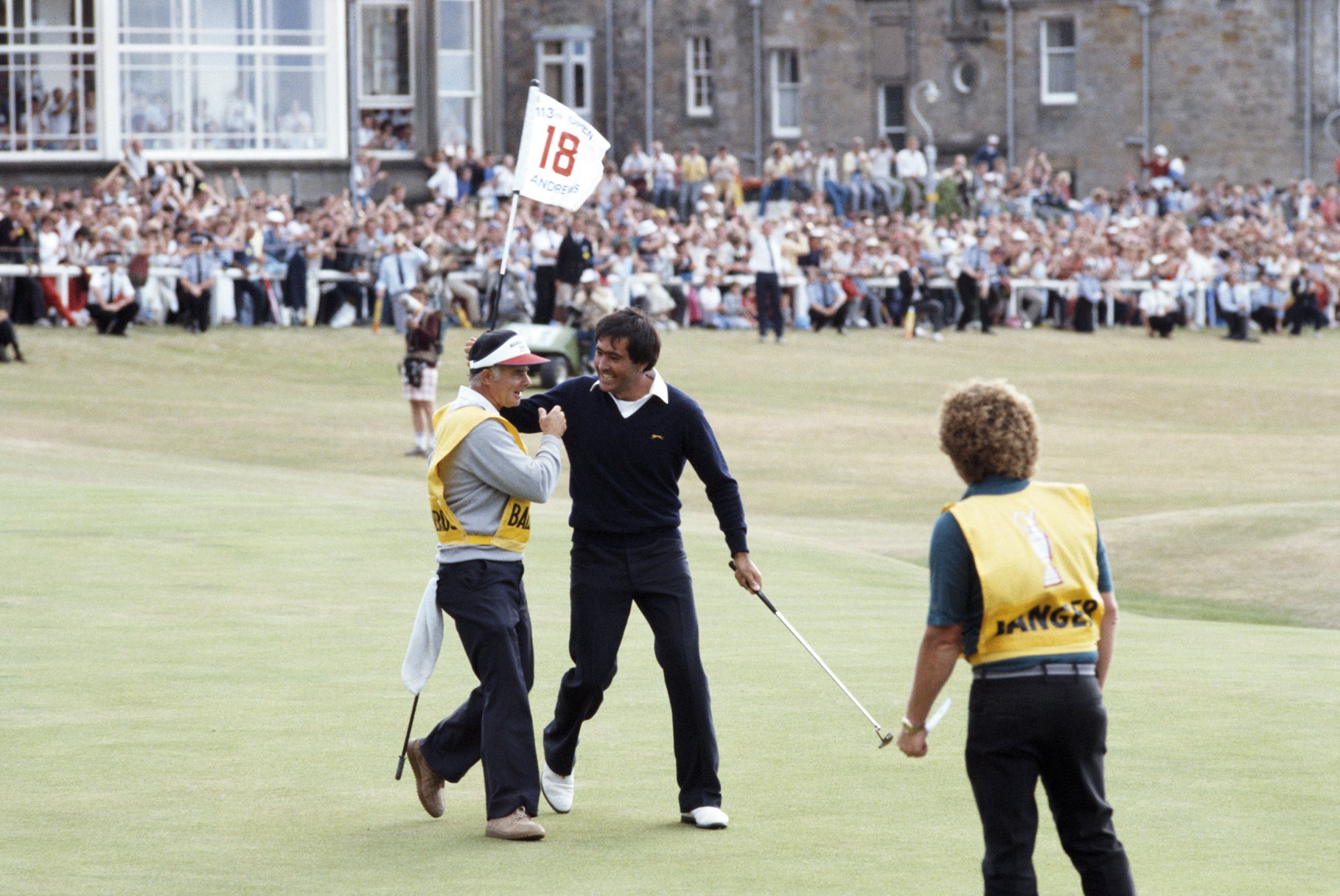John “Nick” de Paul died alone at home on New Year’s Eve 2018. He was 78 years old. Two and a half months later, items from de Paul's estate came up at auction in Denver. They included metal toys, assorted brass instruments and furniture, not to mention the small matter of his collection of “outstanding golf memorabilia”, which included the Burberry team holdall and practice ball bag given to Severiano Ballesteros for the 1985 Ryder Cup at the Belfry; Masters Tournament caddie patches; books, golf balls and baseballs signed by the legendary Spaniard; a black Sounder tour bag with Severiano Ballesteros emblazoned on the side in white lettering. Individually the items were intriguing; collectively they formed a picture of a remarkable working life.
“He’s the man and I’m the caddie,” de Paul had once said, reflecting on one of the greatest – and now most mythical – shots in golf history. The former US Airman and semi-pro baseball player, a native and lifelong resident of Broomall, Pennsylvania, was with Seve on October 16th 1983 when his boss had turned to him and said “Three wood”. They were standing in the rough on the 18th hole on the final day of the Ryder Cup matches at PGA National in Florida. The green was some 250 yards away, across water. Seve was all-square with Fuzzy Zoeller but lying two in a fairway bunker with a high face. De Paul thought it was a crazy decision but said nothing. It wasn’t his style. ”We were two different type personalities. He was a hothead and I was more controlled, a controlled fella,” de Paul recalled. “I was there to calm him down when he got out of line.”
A man of few words, Nick de Paul had cut his teeth as a caddie working for George Archer, Bruce Crampton and Graham Marsh, before first being contacted by Seve’s people in 1980. Europe’s best golfer needed an experienced bagman for his infrequent and reluctant forays to play on the PGA Tour. As everyone in golf knew, Seve’s bag was something of a poisoned chalice. There would be plenty of wins and close finishes, plus no shortage of drama and brilliance. But there would also be tongue lashings, accusations and glowering glances when things went wrong.
"Seve gave you hell every other hole..."
“Seve gave me plenty of headaches over the years,” de Paul happily admitted. “Seve gave you hell every other hole, it seemed, complaining about everything from golf to life in general. But you have to take the abuse. That way, he’s not batting on his own. It’s all part of the business of being a caddie.”
Their full-time partnership began in 1981 and de Paul was inside the white Augusta National overalls when Seve claimed his second Masters Green Jacket two years later. But he very nearly didn’t make it to St Andrews for the 113th Open Championship at St Andrews, the scene of what Seve described as his “greatest moment”. This wasn’t because they had fallen out or Seve had fired him, but because when his overnight coach from Birmingham to Dundee was due to leave, de Paul’s suitcase was locked inside a left luggage office at the bus station.
"I had to get a driver to break into the office for me,” de Paul told the golf writer Norman Dabell for the book ‘Winning the Open: The Caddies’ Stories’. “It was a good job that he did. If I’d had to wait for the office to open the next day, I’d have missed the first round at St Andrews.”
Arriving on the morning of the first day of the tournament, de Paul took a quick look at the sun-baked Old Course before finding his his man in high spirits and, more importantly, in fine form. With three majors and 35 other professional wins to his name, Seve should have been one of the hot favourites coming into the Open but he had not broken 70 in a tournament round in nearly six months.
In the event before the Open, however, there had been encouraging signs. Two of the Spaniard’s closest friends and confidantes on tour, Argentinian Vicente Fernandez and Brazilian Jamie Gonzalez, had noticed he was reverse pivoting. Something clicked at The Belfry because Seve hit another iconic shot during that week, driving the green on the par-4 10th, a blow that later merited a plaque.
Seve hadn't broken 70 in nearly six months
Ballesteros, Fernandez and Gonzalez continued their work in St Andrews and by the time de Paul heaved Seve’s golf bag over his shoulder on the afternoon of Thursday 19th July, its owner was a man transformed. Seve's mother and girlfriend, Carmen, had travelled to Fife to watch him, and he was as relaxed and in command of his game as at any time de Paul could remember. “If the others had realised just how totally he was in charge they would have all been very jittery,” he said.
Seve’s only slip-up on day one was a bogey on the Road Hole and he signed for an opening 69, two shots behind first-round leaders Greg Norman, Peter Jacobsen and Bill Longmuir, who the superstitious star remembered had led during his first Open win, in 1979 at Royal Lytham & St Anne’s. In round two, the pair set off in “a great mood again”. Seve because he was striping his irons; de Paul because he’d narrowly failed to achieve a rare ‘Grand Slam’. For the caddie, this meant catching every one of his man’s practice shots on the range in his trusty baseball mitt. It was a party trick that had made the former slugger something of a legend on the circuit.
Seve could have comfortably shot a 66 on the second day, his golf was that good. Ultimately, though, he had to settle for a 68 after another bogey five on the infamous 17th. “There was a little bit of chewing out this time,” de Paul said, “but I think Seve knew he hadn’t committed himself as well as he could have for the second shot.”
At seven under par for the tournament, Seve was three adrift of the halfway leader, Ian Baker-Finch of Australia. Defending champion Tom Watson, who was gunning for a record-equalling sixth Open title, was on five under despite catching the worst of the weather. The American would show his class on Saturday, firing a 66 that put him in the final group out with the unheralded Aussie, who shot a creditable 71. Seve made his third straight bogey on the Road Hole but his 70 was good enough to secure him a place in the penultimate Sunday two-ball, alongside another of his great rivals, Bernhard Langer.
The sun shone throughout a pulsating final day at the Home of Golf, one in which the lead changed hands on a number of occasions. By midway through the back nine, however, with the Old Grey Toon expanding to fill the horizon, the contenders had been narrowed to two: Seve and the man he most wanted to unseat as the player many regarded as the world’s best, Tom Watson.
“He was so wrapped up in what he was doing, so determined to win,” de Paul said of Seve that day. “There was a kind of aura of it about him and I was definitely carried away with it, I don’t mind admitting.” When his man drained a 25-footer for birdie on the par-5 14th, he drew level with Watson.
“My nerves were really jangling when we got to the Road Hole,” explained de Paul. “Mess up now and we were handing it to Watson, or Langer. “In his press conference the previous evening, Seve had joked about coming back on Monday to play the hole again if he wound up taking another five. This time, though, there was no mistake. A towering 6-iron from the rough found the table top of the green and the precious par was in the bag.
"Make three and there won't be a playoff"
“As we came off the 17th green, Seve said to me: ‘There’s going to be a playoff, Nick.’ I said: ‘Not if we birdie the last there won’t be. Make a three and there won’t be any need for a playoff, Seve, because the trophy will be yours.” The words proved to be prophetic because as Seve clipped his pitching wedge shot from a parched lie to a spot some 16 feet below the hole, Watson was striding towards the wall behind the 17th green, contemplating the mistake that had put his ball hard up against it. “While we were walking to to the 18th green, I looked behind,” remembered de Paul. “I’m not sure Seve did. I saw Watson in trouble.”
De Paul took Seve’s birdie putt, the last of his 276 shots he played that week, to the grave, just as Seve himself did. “It was just a little hook up the hill, just outside the hole. It hung on the lip for about two or three seconds before it dropped in,” the caddie said wistfully. “I knew it couldn’t stay out. Gravity had to make it fall in. He grabbed me around the neck and started squeezing me, which I knew was a good thing.”
Seve was so pumped up that he insisted his caddie was admitted to the balcony of the Royal & Ancient clubhouse to drink champagne. “He loved what he was doing and it was fun to be with him,” de Paul reflected years later. “I see him as a swashbuckling guy who wasn’t afraid to challenge anything or anybody. When he finished and gave that fist-pump, he looks so happy and that's the way I want to remember him.”
Read more

Sam Cooper has piloted his trusty camper van to every links course in Scotland over the past two years, accompanied by his wife Harriet and two Cocker Spaniels. As all eyes turned to Scotland for t...

There's nothing like a trip to the coast to get the juices flowing... Sam Williams of Cookie Jar Golf breaks down the perfect golf trip.




